Q&A: Pharmacy Teams Leverage Technology and Collaboration to Optimize Inventory | McKesson ideaShare
Thomas Sherrer, PharmD, emphasizes teamwork and technology in inventory management to enhance patient safety and reduce medication errors.
In an interview at McKesson ideaShare, held from July 10 to 13, 2025, in Nashville, Tennessee, Thomas Sherrer, PharmD, co-owner of Poole's Pharmacy, highlights the importance of a collaborative, technology-driven approach to tracking and maintaining pharmacy supplies. By implementing a perpetual inventory system, engaging the entire team, and proactively monitoring drug availability, pharmacies can prevent medication errors, reduce waste, and ensure patient safety. He discussed including regular inventory checks, utilizing trusted purchasing sources, predictive ordering, and creating multiple backstops to identify and resolve potential discrepancies.
Drug Topics®: From a practical standpoint, what are the most effective recommended practices for improving inventory turns in a community pharmacy?
Thomas Sherrer, PharmD: Let's go back to team for sure, having the team be a part of it. Somebody is checking expireds, and not just what is expired monthly, but what is going to expire. Can we get ahead of it and maybe use it or sell it or change it between a store before we lose that money? In that sense, we're kind of one of those weird businesses where we lose money because something expires, and you can't really do much about it. So there have been some things that have come, some websites and all of this, when you're purchasing it's making sure everybody's vetted and a trusted source, but utilizing those types of things and having somebody, or somebodies responsible for different aspects, and I also said the other day in the team sport, somebody is not always where their brain thinks, so kind of moving them to see what best fits their skills and tools is important, but yeah, having everybody kind of come in and constantly looking at it, not just once or twice, but on a regular basis, so you're making sure things are good, and then explaining inventory turns, and helping everybody understand that it's good for cash flow, it's good for patient safety, patient satisfaction, things like that. Getting all that buy-in, you can really do it together, because if you have 1 person on board and everybody else isn't, you're not going to get too far, so you got to get everybody.
Drug Topics: How does a well-managed inventory directly contribute to reducing medication errors and improving overall patient safety?
Sherrer: It's the basis. It really is. I mean, we're all human, and so there's chance for error in that sense, but if you have a perpetual inventory and the numbers off, you might be looking to see. Why is it off? What happened? Did you catch something? Or being perpetual, and you feel you have an on-hand count that tells you, you can identify and say, "Oh well, this says I have 100," or "this says it's negative, but I have the bottle in my hand. Oh, no, I'm sorry. That's the wrong medication." That's the wrong strength or wrong formulation. So it plays a 2 parts in that, but overall, having that living, breathing inventory is one of those things where you can maintain and monitor and you can have what you need. You can make sure the patient's getting the correct thing. It's kind of a secondary option; the software will do it for your verification, but having those kind of little backstops—and I laugh and say that sometimes we do stuff a little bit of the long way, but that's because, over the years, I found that we might put it in a certain place or do a certain thing with a bottle or a box or something, and maybe we had it, we kept pulling the wrong strength of the wrong drug or the wrong formulation, and so we moved them different shelves or turned one upside down or something crazy, but why do that? Say because I've just learned it helps prevent medication errors and improves patient safety. So knowing those things will really go a long way in treating your patient and taking care of them.
Drug Topics: What strategies can pharmacies employ to navigate drug shortages or backorders and ensure continuity of patient care despite supply chain disruptions?
Sherrer: That's a big one, and I think COVID brought upon something we've never seen in some of the drugs that have been around a million years were going on shortage or out of stock, so some vendors have a backorder list that will alert you. Others, you might make a fake order and kind of watch it and maintain it and keeping up, keeping your eyes on it. and we also have an open or things like that, where, if it's on backorder, we kind of have it so every morning, you know, 1, 2, 3 times a day, we might be checking different places and different sources as we're kind of trying to watch something. It's gotten better from then that was a weird, wild, and wacky time, for sure, but having those kind of things in there, but we do a lot of predictive ordering, so the hope is that we are ordering it during our billing cycle, so it may be out on day 1, but what we do is we're going to continue to track it and see, and so it may just been out that day, and so when it comes in and you're looking and this was not delivered, you go and, "looks like, oh, it's there. Let me get it." So, kind of keeping up with what you're going to order and what you need is a big part of kind of not chasing your tail with inventory these days or shortages.
Drug Topics: Is there anything else you would like to add?
Sherrer: I think one of the big things is this is something we really have to focus on. It's kind of a pain because it takes away from patient care at times, but if you can get technology helping you, you can get your whole team on board and your team helping you. I think it alleviates it, but it is kind of the nature of the beast these days that we have to kind of keep a little bit more involved and active than maybe in times past, on especially on certain drugs that are shortage kind of come in and go out.
Newsletter
Pharmacy practice is always changing. Stay ahead of the curve with the Drug Topics newsletter and get the latest drug information, industry trends, and patient care tips.






































































































































